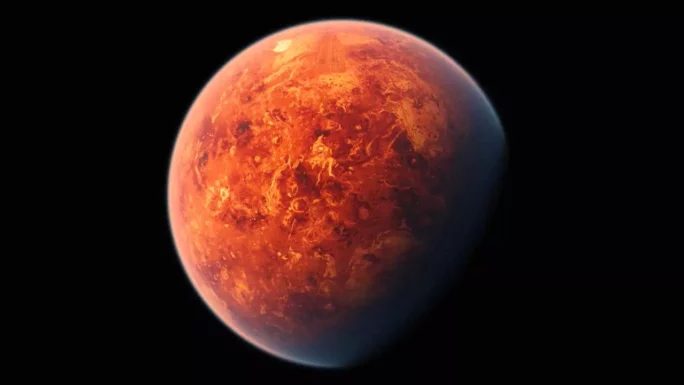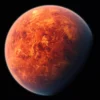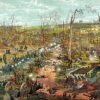Did you know that it would take as many as six Martians to equal the mass of the Earth? Over the years, various space agencies from around the world have initiated countless space missions, some of which have been historic and some doomed to failure. Without a doubt, Mars is the most widely explored planet of all in our Solar System.
Mars, or the red planet, is the fourth planet from the Sun, separating the Earth from the asteroid belt. Despite the fact that the red planet is clearly visible here from Earth with the help of telescopes, closer observation is necessary for a deeper study of the bowels and atmosphere of the planets.
From evidence of the presence of water to the unique features of the planet’s surface and atmosphere, 15 intriguing facts about Mars are collected here, including some historical discoveries made by NASA and other space agencies around the world.
Planet Profile
– First known observation: 2nd millennium BC Equatorial diameter: 6792 km
– Weight: 6.42 x 10 ^ 23 kg
– Density: 3.9335 g / cm
– Surface gravity: 3,711 m/s2
– Orbital period: 1.9 Earth years or 687 days
– Moons or moons: Phobos and Deimos
15. The Red planet got its name from the Roman god of war
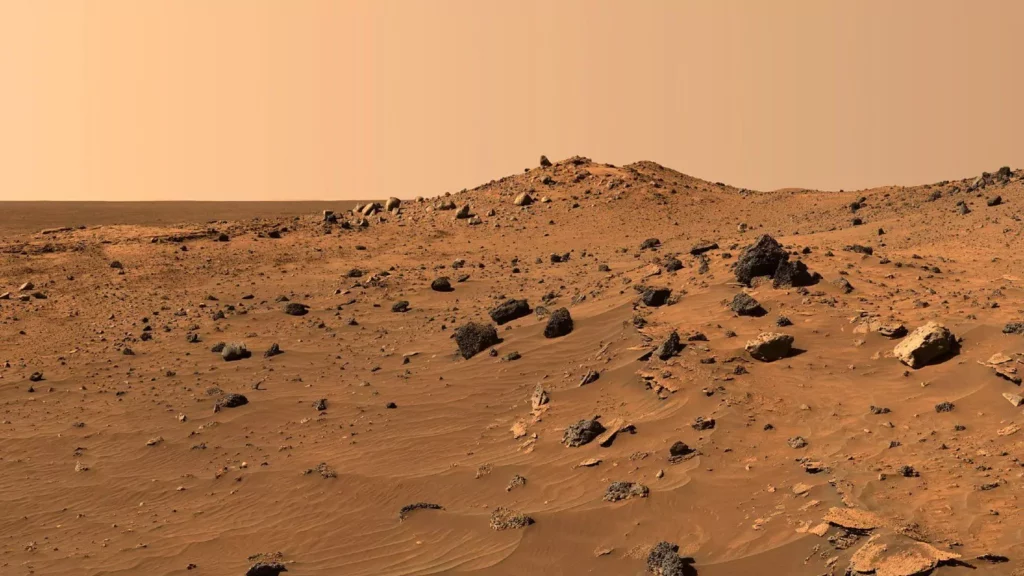
Any other planets in our solar system have their names derived from Greek or Roman mythology, with the exception of the name Earth, which is of English and German origin. Various ancient civilizations throughout human history have observed and named Mars based on their mythology.
The ancient Greeks called him Ares, their god of war. Chinese and Egyptian astronomers used to call it the “fiery star” and “Ei Desher” respectively because of its red color. The Romans also associated the blood-red color of the planet with “Mars”, their own god of war.
14. The largest dust storms in the Solar system
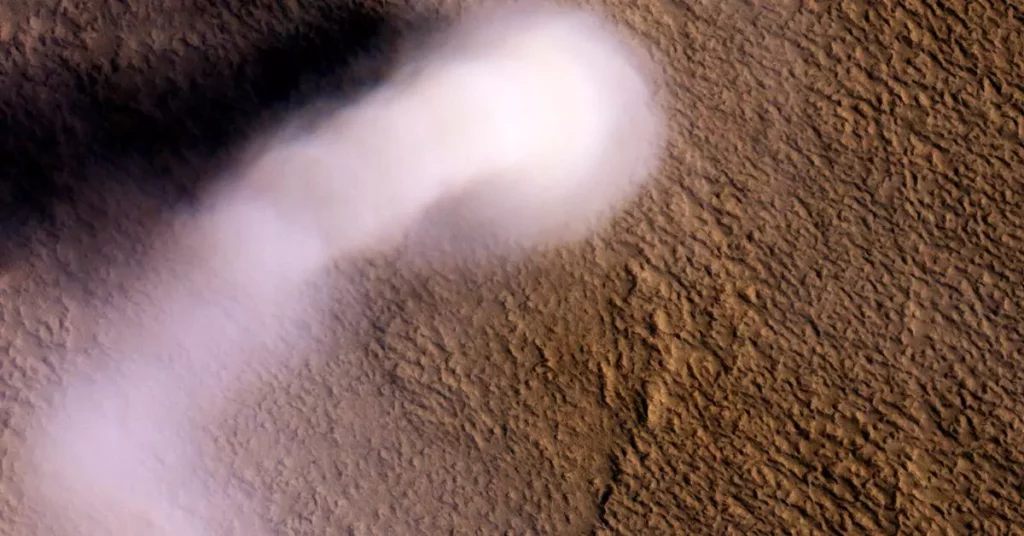
Dust storms are common on Earth, especially in arid regions such as the Arabian Peninsula and North Africa. But the Martian dust storm is not what we are seeing here on Earth. Dust storms on Mars can last for weeks or even months, covering the entire planet. In an interview, Michael Smith, a planetary scientist at NASA’s Goddard Space Center, said that “almost every year, several large dust storms that occur on Mars cover an entire continent-sized area on the Red Planet that lasts for weeks.”
13. Only 23 missions to Mars were successful
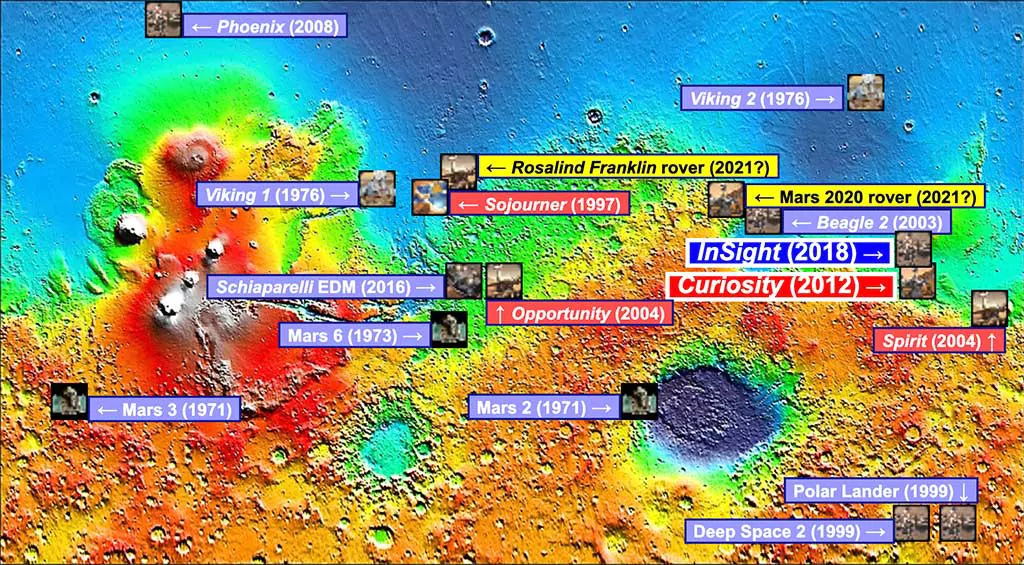
Although NASA’s “Mariner 9” was the first successful space mission to explore Mars, the Soviet Union’s “Mars-2” and “Mars-3” were the first space orbiters to enter Martian orbit. “Mars-3” was also equipped with a lander that landed on Mars on December 2, 1971, but failed immediately after transmitting 20 seconds of data. As of 2016, more than 40 space missions have been sent to Mars, of which only half of them were (are) successful. Some of the most recent missions to Mars are NASA’s Curiosity Rover (2012), the ISRO Mangalyaan orbiter (2013) and Maven. In 2016, ESA and Roscosmos sent the ExoMars orbiter to study the planet’s atmosphere in depth.
12. Mars has the highest mountain in our Solar system
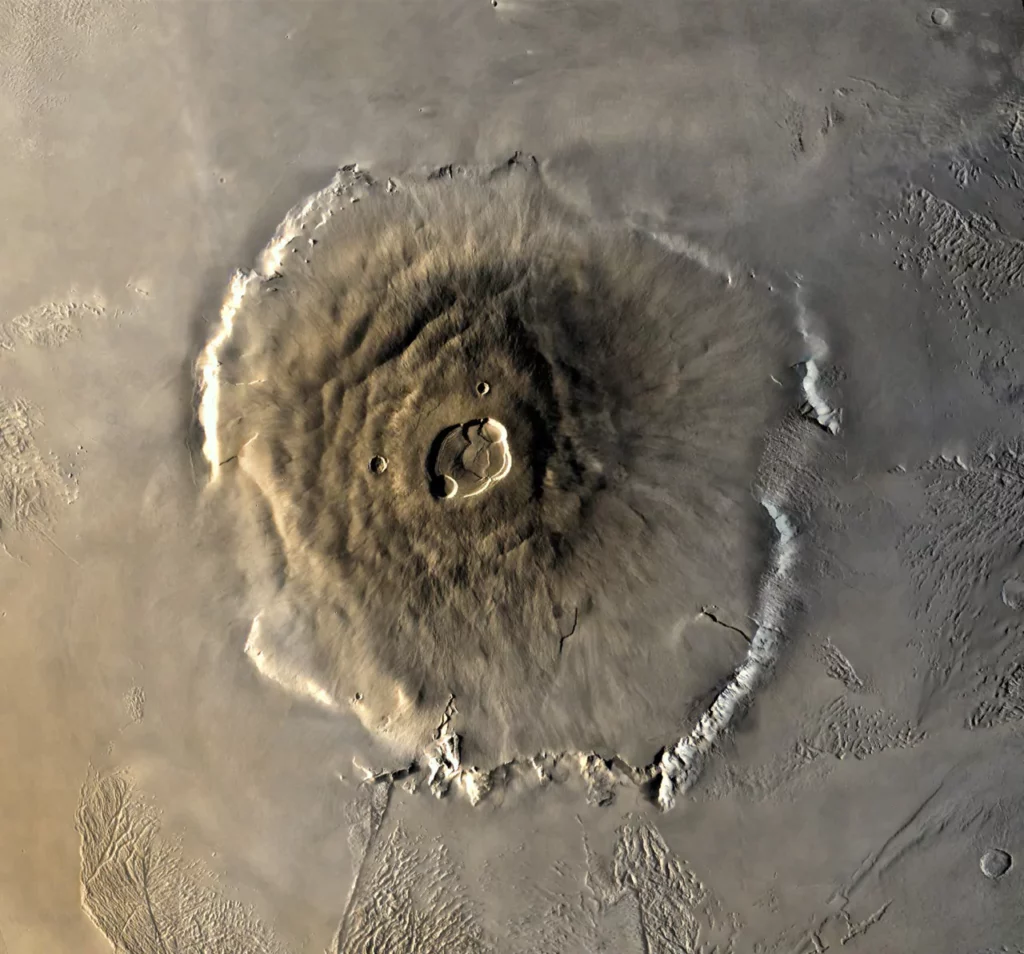
Have you ever wondered which planet in our Solar system has the highest mountain? The answer is Mars. Well, according to the height of the peak, the crown of the highest mountain goes to Vesta, a minor planet located in the asteroid belt, but since it is not a planet, Mars is recognized as having the highest mountain. With a diameter extending up to 600 km and a height of 21 km, Olympus Moon is the largest of them. Numerous studies have shown that it was formed as a result of a volcanic eruption millions of years ago.
11. Morse code on the surface of Mars
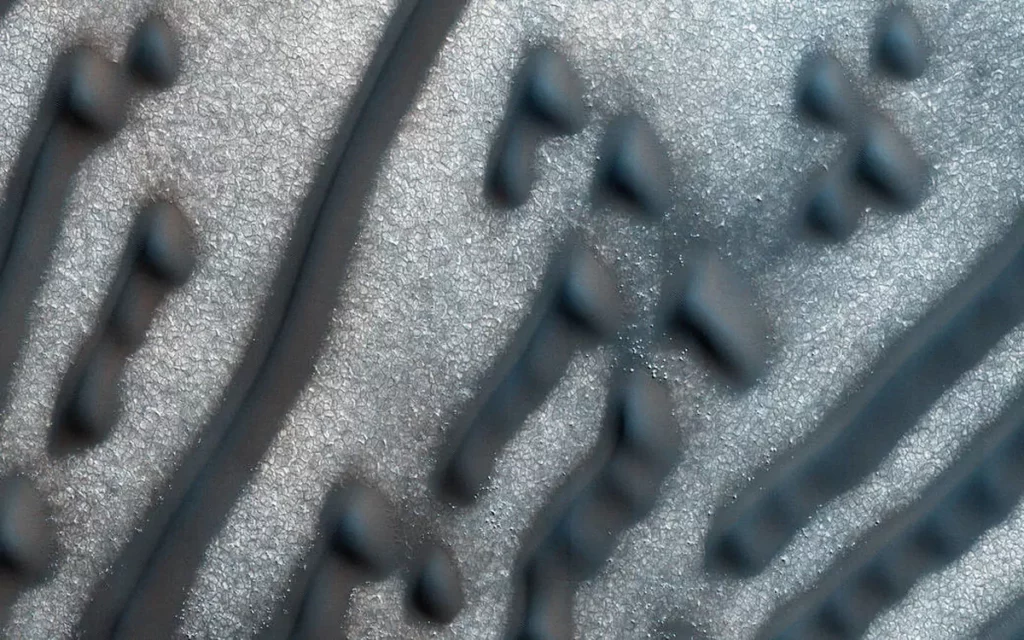
Operational probes and rovers have been observing the surface of Mars for many years, and the dunes are one of its most integral parts. But the latest data collected by the MRO or Mars Reconnaissance Orbiter is what has most attracted the attention of planetary researchers. Back in early 2016, the orbiter identified a specific area on the planet’s surface that featured dunes with complex shapes, including dots and dashes, exactly the same as Morse code. The researchers believe that the dunes resembling the shape of a “dash” were formed due to the fact that the winds cut them at an angle of 90 degrees on both sides, which led to the fact that they took a more linear shape. But what still remains a mystery to Martian experts are the “dots”. Usually these structures arise whenever some external force interrupts the formation of linear dunes.
10. Pieces of Mars fell to Earth
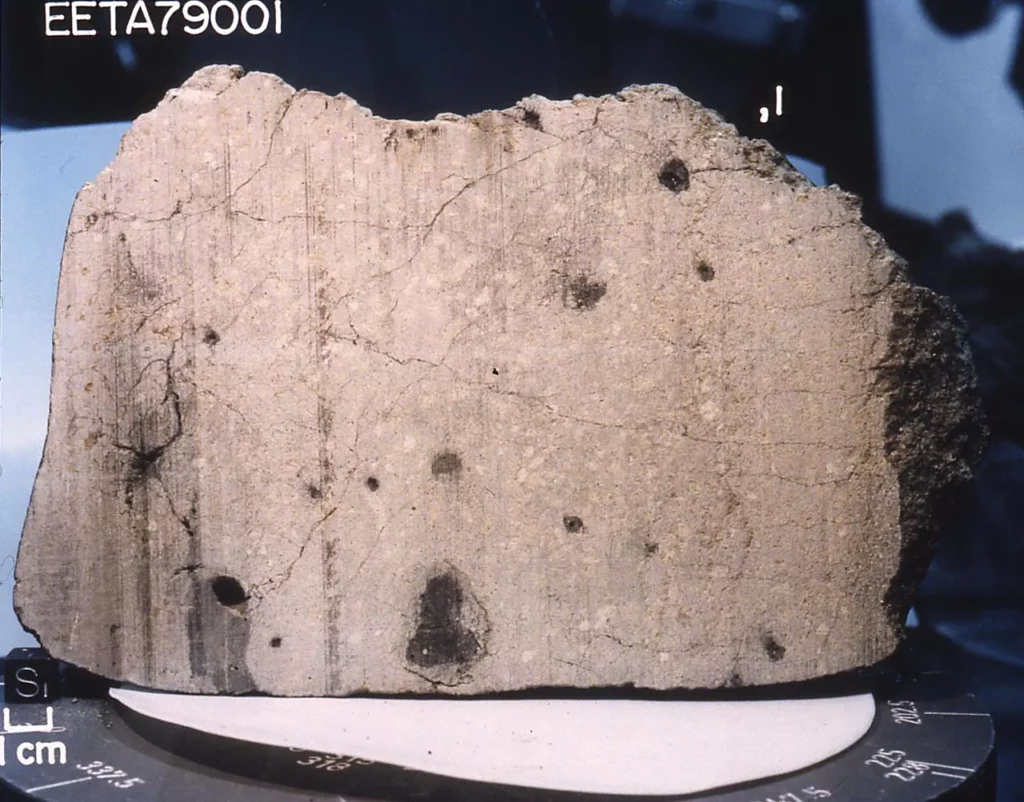
You know that more than 130 meteorites of Martian origin have been discovered on Earth. For a long time, small pieces of the surface of Mars were ejected into space among other solar debris before crashing onto the surface of the Earth. These small meteorites from the red planet helped researchers to study the Martian characteristics more thoroughly even before the destruction of the rovers.
9. Mars may have its own planetary ring in the future
Currently, only the outer planets or gas giants in our Solar System have planetary rings, but researchers believe that Mars may be the first of the terrestrial planets to have its own ring. In the next 30-50 million years, Phobos will be torn apart from one of the two moons due to the excessive gravitational pull that the planet is currently pulling towards the moon. On the other hand, scientists believe that a similar fate awaits Neptune’s satellite Triton, which has already begun to fail.
8. Mars may have been white in the past
According to scientists from the Southern Research Institute, CU Boulder, the red planet could actually have been whiter in the past. They came to this conclusion after learning that the planet had experienced an ice age in relatively recent history, and it was much more intense than anything recorded on Earth. Using ground-based radars, scientists were able to observe 2 km deep into the surface of Mars to witness the icy crust, indicating that the red planet experienced a huge ice age about 400,000 years ago and may witness another one again in 150,000 years or so.
7. The Martian Mineral Mystery
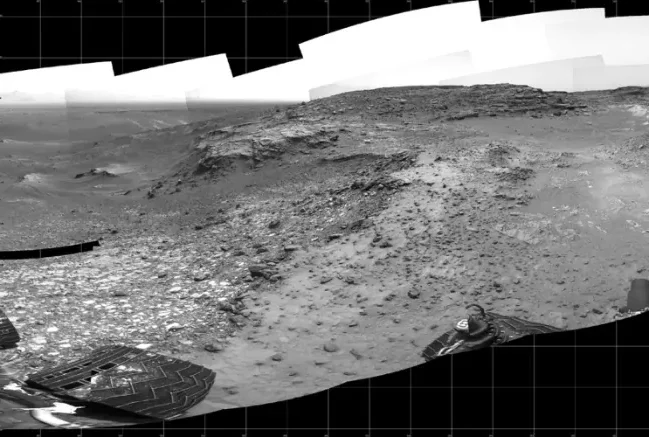
Back in 2015, NASA’s Curiosity rover explored a previously unexplored area on the Martian surface. Currently designated as the “Marias Pass”, this geological region is marked by an extremely high silica content. On Earth, this chemical compound is found in rocks and minerals, mainly quartz. What surprised the scientists even more was the discovery of a rare-earth mineral known as tridymite in the collected samples. Despite the fact that tridymite is extremely rare on Earth, it is found in abundance in the Marias Pass on Mars, and we still don’t know how it got there.
6. The Martian Mohawk
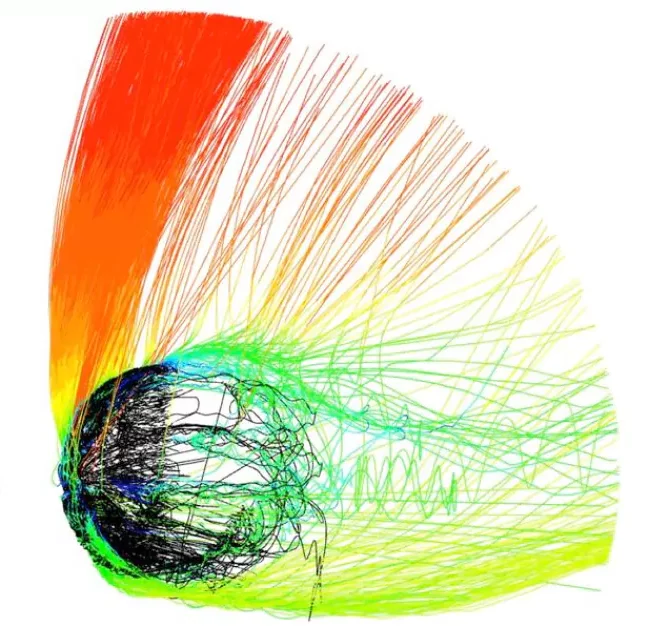
Computer simulations based on data from NASA’s recent MAVEN expedition to Mars have revealed a very fashionable feature of the planet Mars. A feature similar to the Mohawk is caused by the intense expulsion of charged particles from the upper part of the Martian atmosphere into space with the help of solar winds. The electric field generated by solar events, such as coronal mass ejections and flares, directs these particles to either of the Martian poles. This caused the appearance of the mohawk in the upper atmosphere.
5. Hidden underground volcan
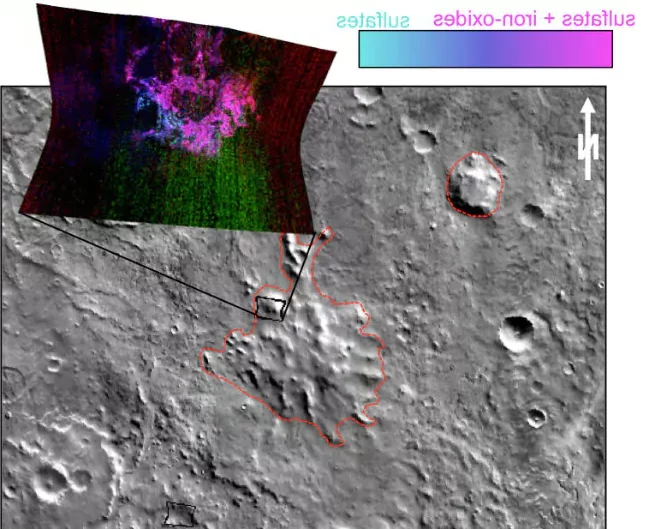
While collecting samples near the Martian region of Sisyphus Montes, the Martian reconnaissance orbiter stumbled upon a mysterious substance. Upon further investigation, the researchers discovered that the mysterious mineral was tridymite, which is commonly found in volcanic rocks on Earth. The discovery of tridymite on the surface of Mars indicates that it has been subjected to intense volcanic activity in the past. In addition, recent evidence from the rover also shows the possibility of underground volcanoes that have occurred under the Martian ice. One clear proof of this is the existence of a plateau in the Sisyphean Mountains of Montes, which closely resembles the underground volcanoes found here on Earth.
4. Ancient Martian tsunamis

The hypothesis of the Martian ocean is perhaps the most popular theory concerning the red planet, where it is assumed that most of the surface of Mars was covered with water earlier, during some geological history of the planet. Although researchers are actively discussing a new study that found that some ocean did exist on Mars, but was destroyed by a series of giant tsunamis. The study showed that these ancient tsunamis were so huge and strong that they could eclipse everything we see here on Earth.
3. Agriculture on Mars

If we are ever going to colonize Mars, we need to grow crops on the barren surface of Mars, otherwise we will just spend billions and billions of dollars exporting food for a few days or a week. To make growing crops on Mars a reality, NASA’s Kennedy Space Center, together with the Buzz Aldrin Space Institute in Melbourne, Florida, are collaborating to study the characteristics of a special group of crops grown in a simulated “Martian Garden”. “Here we are using cutting-edge science to develop and implement methods to increase plant production to help astronauts with proper nutrition,” said Trent Smith of NASA’s Kennedy Space Center in Florida. They are working on the Veggie project, a plant-growing unit that will allow space experiments to be conducted on the ISS.
2. Planetary Tail (latest discovery)

Scientists have now discovered another unusual feature of the planet Mars. In a recent discovery, NASA’s Maven orbiter discovered that Mars has a planetary tail, which has never been observed before. Data from the Maven spacecraft showed that the invisible tail of the planet consists of magnetic forces that are unique among other planets in our solar system. At some point, Mars may have had a strong magnetic field, very similar to our Earth, but tragically lost for some reason. What is left now is just an impression of its former essence, but it is strong enough to express itself as the tail of the planet. The researchers believe that these scattered magnetic fields are still being detected in certain places on the surface of Mars.
1. Ancient Mars was full of water

After years of studying the Martian atmosphere and surface, scientists have come to the conclusion that our planetary neighbor Mars definitely had a lot of water in the past. NASA suggests that once in the past there was enough water on the Red Planet that could completely fill the surface of the planet in one giant ocean. There are two forms of water in the atmosphere of Mars: H20 and HDO (hard water), and their amount is also measured. To make a conclusion, the researchers compared the ratio between H20 and HDO present today with the ratio of water from an ancient Martian meteorite. The study convincingly shows that Mars has almost lost 87% of its water supply to space. Some calculations have also led to the assumption that the ancient ocean of Mars may be much larger than the Arctic Ocean of Earth.

